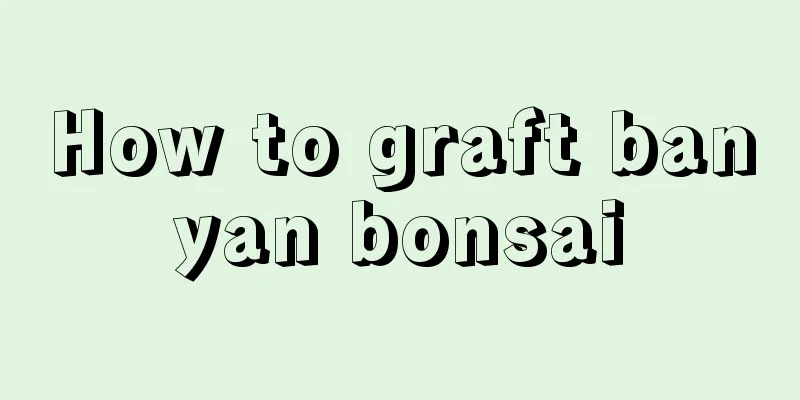Cultivation methods and precautions of thornberry

1. Maintenance methods1. Temperature: During the curing process, the curing temperature needs to be controlled. The most suitable temperature for its growth is between 15 and 25 degrees. 2. Watering: The climate is different in different seasons, so the watering method is also different. There is no need for excessive watering in spring and autumn, and the soil should be kept dry for a long time, because its growth ability is not the strongest at this time and the demand for water is not that great. In summer, it is just the opposite. Summer is its growing season, and the demand for water is relatively high. The soil needs to be kept moist for a long time, and it is generally watered every other day. Generally, no watering is required in winter. Watering is only needed when the soil in the pot turns white. 3. Fertilization: It does not require much nutrients. It only needs to be fertilized two or three times during the growing season. Fertilizers mainly composed of nitrogen and phosphorus can be used. When using, the fertilizer must be diluted before use. And when applying, the soil must be loosened to avoid root burns. 4. Light: It is a sun-loving plant and can receive sunlight all day long, but the summer sun is very strong and needs proper shading. It can receive normal sunlight at other times. 2. Breeding techniques1. Reproduction: It can be propagated by cuttings. When taking cuttings, you need to use lateral roots that are one centimeter thick. After digging them out, cut them into ten-centimeter cuttings, and then insert them into a deep trench about ten centimeters deep. When inserting, insert them obliquely, leaving one-fourth of the root strip exposed, and then fill them with soil. 2. Pruning: In spring, pruning is needed to remove the dry parts at the top of the two-year-old branches. This will encourage the remaining branches to grow stronger. 3. Problem Diagnosis1. Pests: The willow bat moth is the main pest that attacks blackberry. If it is not dealt with in time, it will seriously affect the yield of the next side. If the plant is found to be infected, the affected branches need to be pruned off before the pests emerge, and then sprayed with chlorothalonil for disinfection and antibacterial purposes. 2. Disease: If the leaves of the plant are covered with a layer of white powdery substance, it may be infected with powdery mildew. To treat this disease, you need to cut off the infected part and then spray methyl thiophanate powder. IV. Other issues1. Edibility: It is edible. 2. Toxicity: Non-toxic. In addition to being edible, it can also be used as medicine. |
<<: Ivy cultivation methods and precautions
>>: Winter melon cultivation methods and precautions
Recommend
What fertilizer should be used for hydroponic green radish and how to grow it to make it flourish?
1. What fertilizer to use Hydroponic green radish...
How often should I water the longevity flower? Watering time and method
How often should I water the longevity flower? Wh...
Can yew be hydroponically cultivated?
1. Is it possible to grow hydroponically? 1. It c...
If you learn this method, you can grow any flower
step Today Huahua will introduce to you a univers...
How to make bonsai with crape myrtle
Selection of flower species When making crape myr...
When do lilies bloom? Pictures of lilies
1. When do lilies bloom? The blooming time of lil...
The reason why the leaves of osmanthus curl, can it still survive if all the leaves fall off?
1. Reasons for leaf curling 1. Lack of water: If ...
What to do if the climbing rose is hardened and not repotted (How to repot the climbing rose that has already climbed)
Potted flowers can easily cause soil compaction, ...
When should I repot my Kalanchoe? What should I do if the leaves become soft after repotting?
1. Time to change pots Choosing the right time to...
Geranium flower language and symbolism: What are the flower languages of white and red geraniums?
1. Flower Language Every spring is the season whe...
How to prune the fortune tree to make it more luxuriant, and when to prune it
1. When to prune the fortune tree The fortune tre...
Are lilies poisonous when placed indoors?
1. Is it toxic? Lily is a non-toxic flower and it...
Can you cut the leaves of daffodils?
1. Can I cut the leaves? For this kind of daffodi...
What flowers are suitable for growing in Kunming? What are the city flowers and trees?
1. Climate characteristics of Kunming Kunming is ...
The main value of Brazilian iris
The ornamental value of Brazilian iris The flower...









